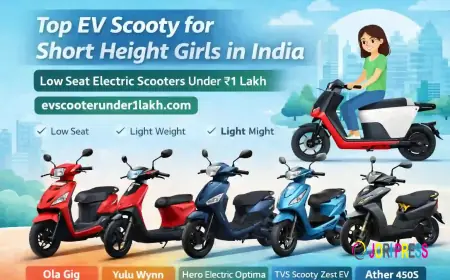Unified Vision: The Rise of Sensor Fusion in Automotive Applications

The global automotive sensor fusion market is evolving rapidly, driven by the rise of advanced driver-assistance systems (ADAS), autonomous vehicles, and the need for real-time environmental perception. Sensor fusion refers to the integration of data from multiple sensors—such as cameras, radars, LiDAR, and ultrasonic sensors—to create a comprehensive, accurate, and reliable representation of the vehicle's surroundings.
Sensor fusion acts as the digital brain of autonomous systems, enabling vehicles to perceive, interpret, and respond to their environment safely and intelligently. With the automotive industry pushing toward higher levels of automation and enhanced safety features, sensor fusion technologies have become critical for decision-making, navigation, and obstacle detection. The market is poised for sustained growth as original equipment manufacturers (OEMs), chipmakers, and software providers invest in intelligent systems that combine precision, redundancy, and robustness.
Market Overview
The automotive sensor fusion market represents the convergence of hardware and software innovations. While individual sensors play unique roles, no single sensor type can independently ensure reliable perception in all driving scenarios. Sensor fusion addresses this gap by aggregating and processing data from diverse sources using advanced algorithms and artificial intelligence.
The market is witnessing continuous innovation in sensor technology, AI-powered fusion algorithms, edge computing, and real-time data processing, making sensor fusion a foundational component of next-generation vehicles.
Click here to download a sample report
Key Market Drivers
- Proliferation of ADAS and Autonomous Vehicles
Growing adoption of safety and automation features necessitates accurate and real-time environmental awareness. - Need for Redundancy and Reliability
Combining data from multiple sensors enhances confidence in decision-making and ensures safety in complex driving environments. - Technological Advancements in AI and Edge Computing
Improved processing capabilities allow real-time fusion of high-bandwidth data with minimal latency. - Stringent Vehicle Safety Regulations
Governments and regulatory bodies require implementation of systems that rely heavily on sensor fusion for crash avoidance and pedestrian detection. - Consumer Demand for Smart Vehicles
Buyers increasingly expect features like parking assist, collision warnings, and lane-keeping—all enabled by sensor fusion.
Market Segmentation
By Sensor Type:
- Camera
Offers visual perception, object classification, and lane detection. - Radar
Detects object speed, range, and presence, functioning reliably in poor weather. - LiDAR
Provides precise 3D mapping and obstacle detection in high-definition detail. - Ultrasonic Sensors
Ideal for low-speed maneuvers such as parking and obstacle avoidance. - Inertial Measurement Units (IMU) and GPS
Support localization and motion tracking within fusion systems.
By Level of Autonomy:
- Level 0–2 (Driver Assistance)
Basic ADAS functionalities like emergency braking and lane-keeping. - Level 3–5 (Highly to Fully Autonomous)
Sensor fusion enables real-time decision-making without human intervention.
By Vehicle Type:
- Passenger Cars
Largest segment due to consumer demand for safety, comfort, and innovation. - Commercial Vehicles
Adoption increasing for fleet safety, delivery automation, and platooning. - Electric Vehicles (EVs)
Heavily reliant on sensor fusion for energy efficiency, navigation, and automation.
Regional Insights
North America
Home to leading sensor fusion technology providers, autonomous vehicle testing hubs, and strong regulatory backing. The U.S. remains at the forefront of innovation and deployment.
Europe
Favorable government policies on vehicle safety, automation, and emissions control support widespread sensor fusion adoption. Germany and the U.K. are investing in smart mobility.
Asia-Pacific
Rapid urbanization, automotive production growth, and investments in smart transportation are driving demand in China, Japan, and South Korea. EV adoption further fuels the market.
Latin America
Gradual growth fueled by increasing vehicle safety awareness and global automotive partnerships in Brazil and Mexico.
Middle East & Africa
Emerging interest in sensor-enabled mobility solutions, with adoption tied to broader smart city initiatives.
Competitive Landscape
The sensor fusion market includes a broad array of participants—from hardware suppliers and chipmakers to software firms and automotive OEMs. Key competition lies in integration capabilities, processing efficiency, and system scalability.
Competitive Strategies:
- Partnerships Between OEMs and Tech Firms
Collaborations ensure optimized sensor hardware and fusion algorithms for specific vehicle models. - Focus on AI-Driven Fusion Platforms
Machine learning improves accuracy, adaptability, and contextual awareness in sensor data processing. - Modular and Scalable Architectures
Suppliers are offering customizable sensor fusion systems for vehicles across segments. - Chipset and Microcontroller Innovation
Development of high-performance, low-power processors capable of fusing and interpreting large datasets in real-time. - Emphasis on Open Source and Interoperability
Efforts to standardize protocols and interfaces to ensure broad compatibility across platforms.
Technological & Product Trends
- Sensor Redundancy Systems
Building fail-safe mechanisms into vehicles by fusing multiple sensor streams for the same input. - Centralized vs. Distributed Architectures
Transition from decentralized sensor processing to centralized fusion modules with improved computing power. - Integration with V2X and Connectivity Platforms
Sensor fusion increasingly includes external data sources from infrastructure and other vehicles. - Miniaturization and Cost Reduction
Compact, integrated sensor units make high-end safety features feasible for mass-market cars. - AI-Powered Edge Fusion
Local processing of sensor data on edge devices ensures low-latency response and reduces cloud dependency.
Challenges and Restraints
- High System Complexity and Integration Cost
Fusion platforms require significant software and hardware coordination, increasing development timelines. - Calibration and Synchronization Difficulties
Ensuring seamless alignment between sensor inputs across different formats, angles, and latencies. - Environmental Limitations of Sensors
Sensors like cameras and LiDAR may struggle in poor weather, requiring robust fusion algorithms for compensation. - Cybersecurity Risks
Increased sensor and communication points create new vulnerabilities for malicious access or interference. - Standardization Gaps
Industry-wide standards are still evolving, especially for interoperability and safety certification.
Future Outlook (2024–2032)
The automotive sensor fusion market is expected to witness robust growth driven by:
- Rapid adoption of Level 2+ and Level 3 autonomy
- Improvements in sensor reliability and AI-based data interpretation
- Development of low-cost, high-performance fusion chips
- OEM mandates for integrated safety and driver-assist technologies
- Government support for connected and automated transportation
Fusion platforms will become more intelligent, modular, and compatible with a wide range of sensors and data inputs. They will serve as the digital core of future autonomous mobility systems.
Conclusion
The global automotive sensor fusion market stands at the heart of the automotive industry’s shift toward intelligent, connected, and autonomous mobility. By combining data from multiple sensors into a unified situational picture, sensor fusion enables safer driving, smarter navigation, and reliable vehicle automation.
What's Your Reaction?
 Like
0
Like
0
 Dislike
0
Dislike
0
 Love
0
Love
0
 Funny
0
Funny
0
 Angry
0
Angry
0
 Sad
0
Sad
0
 Wow
0
Wow
0



















































